Can I say that using the active power, I can estimate the active energy consumption of the motor or the active energy is something that is not widely used as a term, especially in an industrial environment?
True power is the actual energy consumption/conversion, so there is no need to estimate it if you already know it. Active or True energy, assuming those are valid terms, would just be quantities of energy that were to be converted to non electrical energy, and the active/true power is the rate of conversion.
If I can use the above term, is it OK if I do not consider at all the reactive energy? Is it even meaningful to talk about reactive energy?
I suspect that would strongly depend on what you are doing. If it's irrelevant to your task, yes you may disregard it, but if you're asking generally if you can ignore power factor or something like that, the answer is no.
What do we generally mean when we talk about electrical energy in a factory?
When we talk about electrical energy in a factory or any other system, we are referring to potential energy available due to a voltage difference that causes current to flow in order to accomplish tasks, electrical in nature or not.
Do we refer to the sum of the active power in kWh?
kWH, or thousand watt hours, refers to the consumption/conversion of energy it is produced by multiplying a rate of energy conversion(a power figure) by the period of for which the energy is being converted, so a figure in kWh expresses a quantity of energy used or available.
Or do we use the apparent power to calculate the energy in this case?
Hmmm I think you might be very hazy on what power and energy mean in the first place. Before I go on, I would just point out it's not clear what you're talking about. Do we use which apparent power figure in which way to calculate what energy figure? Most of your questions are similarly difficult to answer, so I'll add the following:
Hmmmm... Ok, so I think a little clarification might straighten things out for you.
True Power is power that is actually being "used"(converted to some other form of energy and removed from the circuit as heat, kinetic energy, etc)
Reactive Power is power being stored in reactors(inductors and capacitors) and fed back to the circuit at a later time. While this power itself is not used by the circuit it can contribute to waste heat, as it increases current in portions of the circuit as it "rings" back and forth between reactors.
Apparent Power is the power that appears when you simply measure the circuit without separating out the reactive portion of the power. Some fancy guy figured out that the relationship between these figures could be expressed with the mathematics related to the sides of a triangle, as you see here:

Reactive energy, if anything, would be the energy stored by the reactors in a circuit, and its rate of transfer/storage would likely be the reactive power.
Hope this helps.
